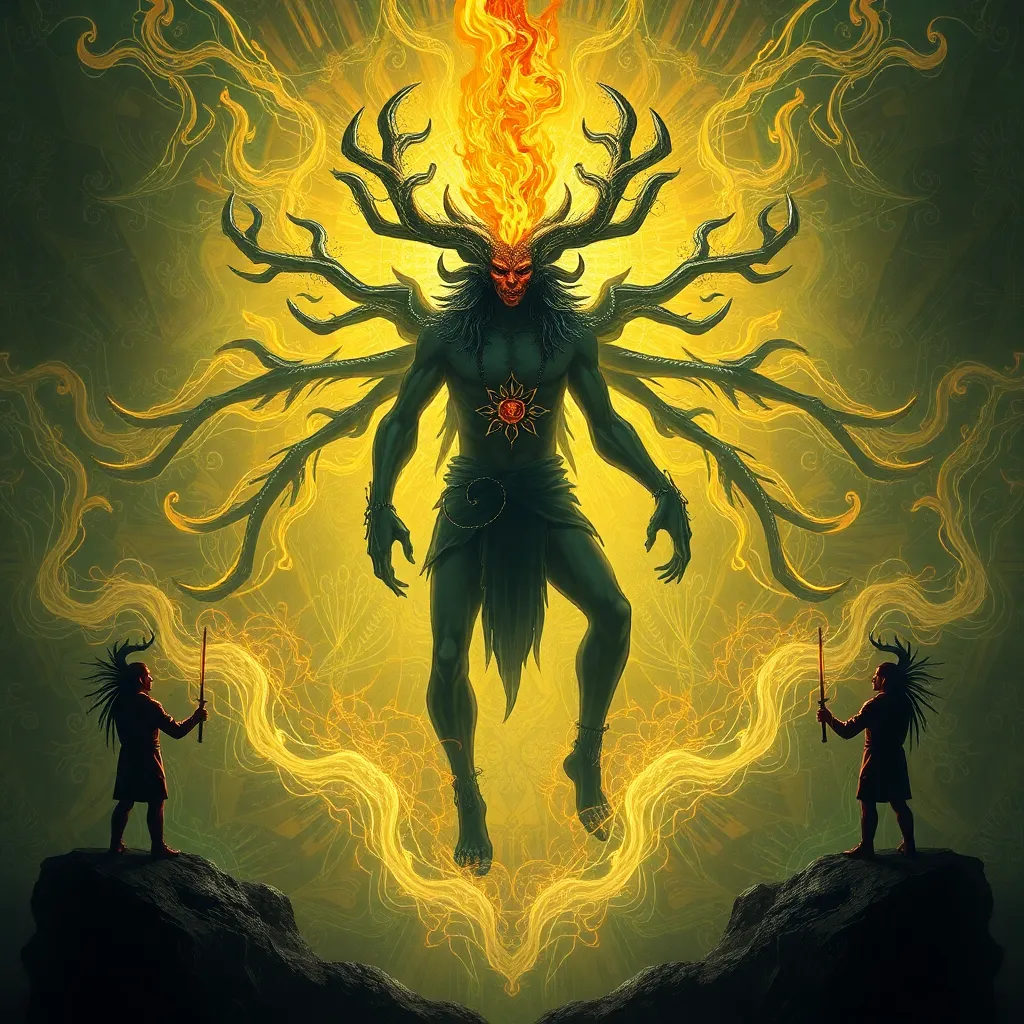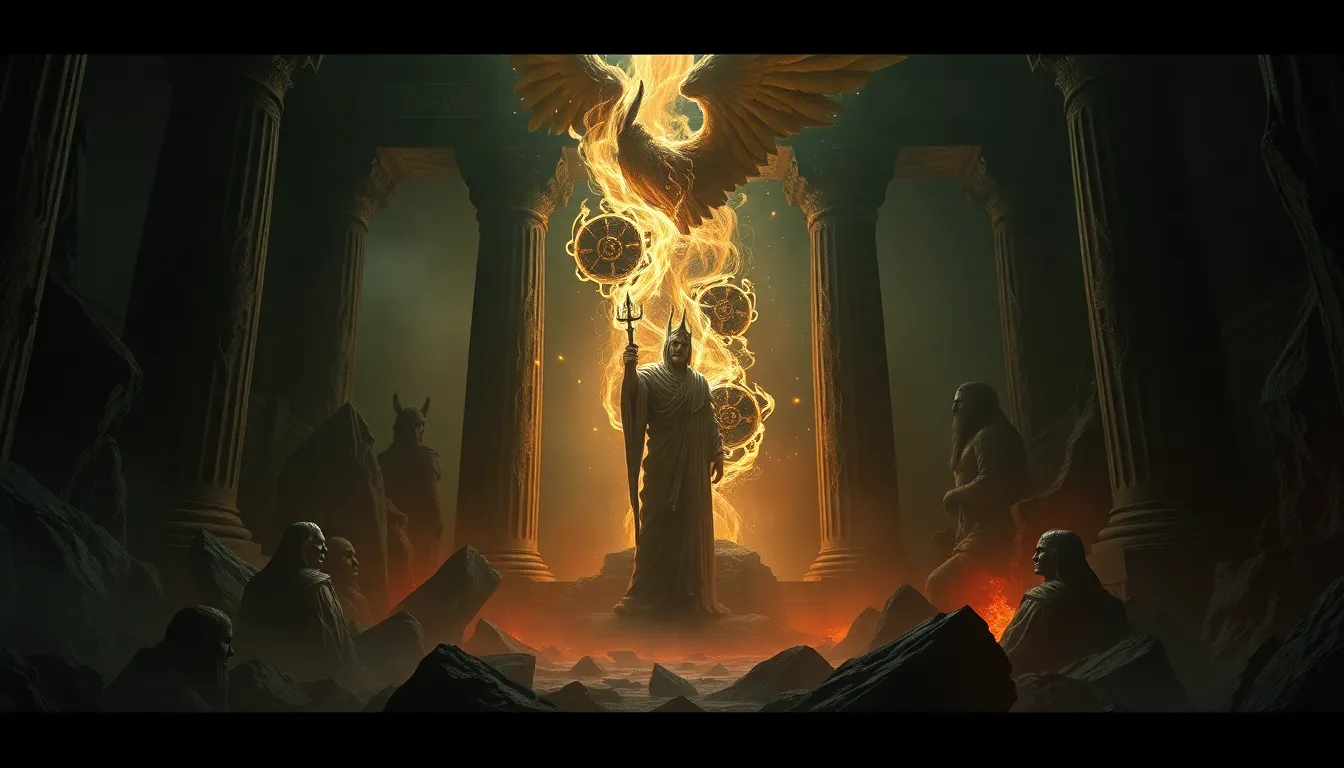The Ifrit and the Human Psyche: Exploring their Psychological Significance
1. Introduction
The Ifrit is a captivating figure in mythology, often depicted as a powerful, fiery spirit found primarily in Arabian folklore. As a type of djinn, the Ifrit embodies both the allure and the danger of the supernatural, serving as a symbol of the complexities of the human experience. Mythological creatures like the Ifrit offer profound insights into the human psyche, acting as mirrors to our inner struggles, emotions, and conflicts. This article aims to delve into the significance of the Ifrit, exploring its psychological implications and the deeper meanings it holds within the framework of human consciousness.
2. Understanding the Ifrit: Mythological Background
The Ifrit has its origins in ancient Arabian mythology, characterized as a formidable being often associated with fire and chaos. Unlike other spirits, Ifrit are typically viewed as both malevolent and benevolent, capable of both destruction and protection. Their portrayal in folklore often emphasizes their cunning, strength, and unpredictable nature.
- Origin: The Ifrit is believed to have emerged from the same elemental forces as djinn, with roots tracing back to pre-Islamic Arabian religions.
- Characteristics: Ifrit are described as large, powerful entities with the ability to shape-shift, often depicted with fiery features.
- Symbolism: They symbolize the untamed aspects of nature and human emotion, representing both fear and fascination.
In comparison to other mythological beings, such as demons or angels, the Ifrit occupies a unique space. While demons are often seen as purely malevolent, and angels as purely benevolent, the Ifrit embodies a duality that reflects the complexities of the human experience.
3. The Ifrit as a Symbol of Inner Conflict
The Ifrit serves as a profound representation of inner conflict, particularly in relation to repressed emotions. The psychological struggle between our desires, fears, and societal expectations can manifest in the archetype of the Ifrit, symbolizing both the chaos of unexpressed feelings and the potential for transformation.
- Repressed Emotions: The Ifrit can represent anger, frustration, and other emotions that individuals may suppress, highlighting the necessity of confronting these feelings.
- Destructive vs. Protective: The dual nature of the Ifrit embodies the tension between destructive impulses and the protective instincts that arise from fear.
Confronting one’s inner demons, much like facing an Ifrit, can lead to significant psychological growth. This encounter often requires courage and self-reflection, as individuals must navigate the complexities of their emotional landscapes.
4. The Ifrit in Literature and Art
The Ifrit has been portrayed in various literary works and artistic interpretations throughout history. From ancient texts to modern adaptations, the Ifrit captures the imagination and serves as a vessel for exploring psychological themes.
- Literary Works: The Ifrit appears in stories like “One Thousand and One Nights,” where it often plays a role in moral lessons and the consequences of human actions.
- Artistic Interpretations: Visual representations of the Ifrit often depict it as a fearsome yet mesmerizing figure, reflecting its complex nature.
These portrayals not only entertain but also invite audiences to engage with their own emotions and experiences, offering a means of processing intricate psychological themes through storytelling.
5. Cultural Interpretations and Psychological Themes
The understanding of the Ifrit varies across cultures, each interpreting its significance through their unique lenses. This diversity enriches the psychological themes associated with the Ifrit, showing how cultural narratives resonate with universal human experiences.
- Fear: The Ifrit often embodies fears related to the unknown and the uncontrollable aspects of life.
- Power: The Ifrit’s immense strength symbolizes the potential for personal empowerment when one confronts their fears.
- Transformation: The journey of facing and integrating the Ifrit can lead to personal transformation, illustrating the power of myth in personal growth.
These themes reflect the complexities of human emotions, revealing how cultural stories can help individuals navigate their psychological landscapes.
6. The Ifrit and the Archetype of the Shadow
Carl Jung’s concept of the shadow self refers to the unconscious part of the psyche that contains repressed weaknesses, desires, and instincts. The Ifrit can be seen as a manifestation of this shadow, representing the darker aspects of the self that need acknowledgment and integration.
- The Shadow Self: The Ifrit embodies traits that individuals may deny or reject, highlighting the importance of embracing these aspects for holistic healing.
- Integration: Engaging with the Ifrit can facilitate the integration of the shadow, leading to greater self-awareness and emotional balance.
Understanding the Ifrit in this context underscores the necessity of confronting and integrating all parts of the self for personal growth and transformation.
7. Therapeutic Applications: Working with the Ifrit Archetype
The Ifrit archetype can be incorporated into therapeutic practices, providing a rich framework for exploring personal struggles and emotional challenges. Therapists may employ various strategies to utilize the Ifrit in their work.
- Storytelling: Clients can be encouraged to recount personal narratives that involve the Ifrit, facilitating deeper exploration of their feelings and experiences.
- Imagery Work: Guided imagery techniques may involve visualizing the Ifrit, allowing clients to confront and engage with their fears.
Case studies illustrate the effectiveness of mythological exploration in therapeutic settings, demonstrating how individuals can find healing and understanding through the lens of myth.
8. Conclusion
In summary, the Ifrit serves as a powerful symbol within the human psyche, representing the complexities of inner conflict, repressed emotions, and the journey of personal transformation. Its portrayal across various cultures and artistic mediums underscores its relevance in contemporary psychological discourse. By engaging with the Ifrit, individuals may uncover insights into their own struggles, leading to greater self-awareness and potential for healing. The enduring significance of myth in our lives reminds us of the universal human experience, offering pathways for personal growth through understanding and integration.



